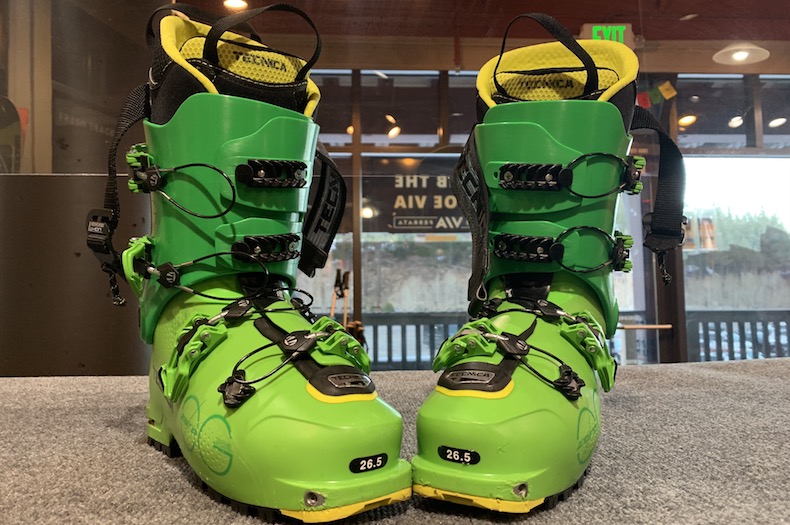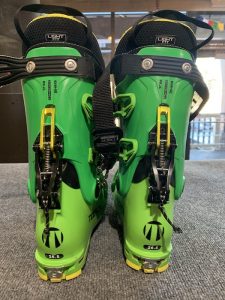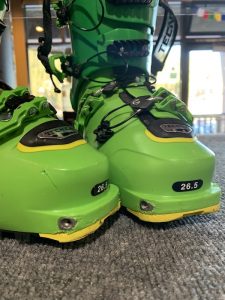Backcountry Ski Touring Boots vs Downhill Resort Boots


So you’re wanting to start backcountry skiing? Before you click into your skis and head out, you should go over what equipment you’ll need to make sure you’re properly set up for a great day in the backcountry. The ski boots that you use for backcountry touring are different from the boots you use while you’re lapping groomers at the resort, so it’s important to know what you should be looking for in a ski touring boot. When it comes to backcountry touring boots, it’s a bit more complicated than “If the shoe fits, wear it”. Below are some of the main components to look for in backcountry ski touring boots.
Backcountry Touring Boots vs Resort Boots
The ski boots that you wear in-bounds are made with one purpose; skiing downhill. The main difference in backcountry touring boots is that they are designed for both uphill and downhill travel.

Hike and Ski Mode
Backcountry ski touring boots have a “hike mode” that allows the cuff of your boot to pivot back and forth when climbing uphill. The ability of the boot to flex with your foot as you’re ascending is key for comfort and climbing technique. When you’ve transitioned and are ready to start heading down, the boots will have a “ski mode” that will stiffen up the boot and give you the reactivity that you need for shredding downhill.

Tech Binding Compatibility
The bindings that we use for backcountry skiing require ski boots to have a pin-hole molding that connects the pins on the binding to the toe of the boot. This keeps the toe of your boots attached to your skis and allows your heel to raise freely with the rhythm of your climbing. It will also be important to make sure that your boots have a slotted plate at the heel for the tech bindings to attach to when you’re ready to transition to downhill. There are bindings that don’t require pin-hole moldings, but they are heavy and we recommend tech bindings for backcountry touring. It would be a good idea to make sure that your boots are tech binding compatible when you’re looking at boots.
Ski Sole
Backcountry ski touring boots will also have a more lugged sole that will help give your boots grip while traversing rock or on the approach to a ski tour. They often also have rocker soles that help make the uphill climb more comfortable.
Snowboard Boots
Most snowboarding boots will work for splitboarding in the backcountry and you will not need backcountry specific boots to go out with us.
The Bottom Line:
Backcountry ski touring boots are different than downhill resort boots. Your boots will need hike/ski modes and tech binding compatibility in order to go backcountry skiing. Choosing and fitting a good pair of boots is one of the most important steps in getting a proper backcountry touring set up, so take your time and make sure that your boots will work with your binding set up!
Ready to Book?
Our reservation system is open and accepting bookings for AIARE 1 avalanche courses, Backcountry 1.0, 2.0 & 3.0, as well as our full menu of winter adventure and education. If you are still feeling uncertain, we’ve relaxed our cancellation policy to make booking worry-free. Book a day out with us and if we can’t be open due to COVID-19, you’ll get a credit to use at a later date or a full refund.